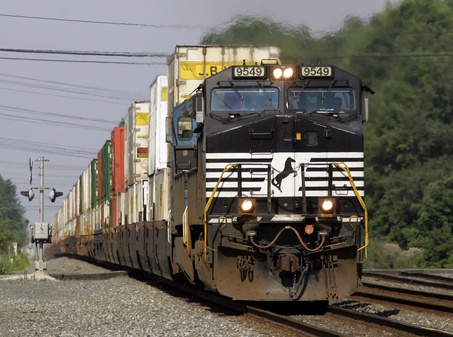
Service to Memphis Builds Virginia’s Position as an Alternative to US West Coast
Beginning April 1, The Port of Virginia® will expand its westward reach with a new daily rail service between the port’s primary container terminals and Norfolk Southern’s regional intermodal terminal near Memphis.
“It’s an important step west and south for The Port of Virginia,” said Stephen A. Edwards, CEO and executive director of the Virginia Port Authority. “Both exporters and importers have asked us [Norfolk Southern and the port] to develop a high-quality Memphis rail service.
“When we first discussed this possibility, we agreed consistency was critical to developing a first-class product that provides daily service to and from this market. We have spent the past six months working together to ensure we are both ready and capable to meet customer expectations.”
The railroad’s regional terminal is in Rossville, which is in Southwest Tennessee, and located on Norfolk Southern’s Crescent Corridor route. The terminal is about 40 miles from Memphis, which is an important Midwest intermodal center. Memphis is one of only four cities in the US to be served by five Class I railroads, and according to the Greater Memphis Chamber, cargo moving through Memphis can reach 45 states and Canada and Mexico by rail within two days.
“We’re investing nearly a billion-and-a-half dollars to expand our on-dock rail capabilities, modernize one of our terminals and make our shipping channels the deepest on the US East Coast to create the East Coast’s leading global gateway,” Edwards said. “We are always looking for opportunities to expand into new markets and create demand. It’s important that we continue to collaborate with our long-time rail partner, Norfolk Southern, to create consistent, complimentary rail products to meet the
needs of those companies that want to diversify their logistics and supply chains and reach new
markets.”
The port is engaged in a $1.4 billion expansion effort called the Gateway Investment Program. This includes expanding the port’s overall annual rail capacity to 1.8 million TEUs (twenty-foot equivalent units); completely renovating the North Berth at Norfolk International Terminals to create the capacity for 800,000 lifts, annually; and deepening the commercial shipping channels to at least 55 feet deep and making them wide enough for two-way traffic of ultra-large container ships.







